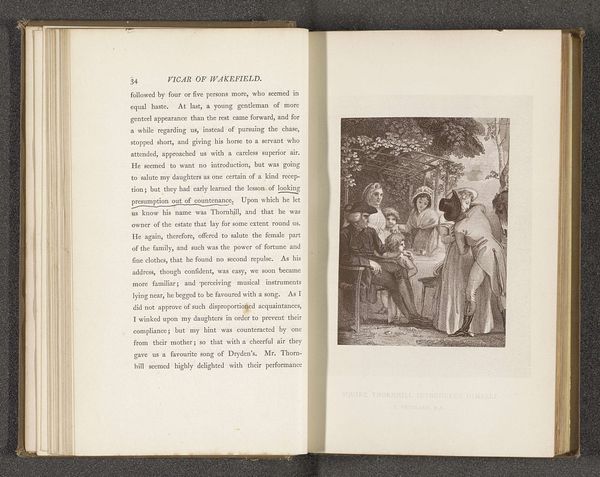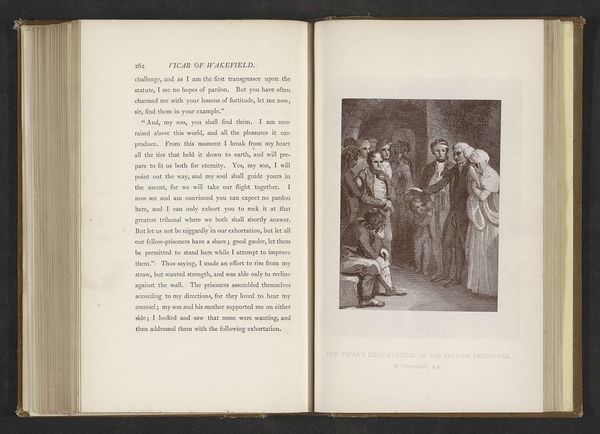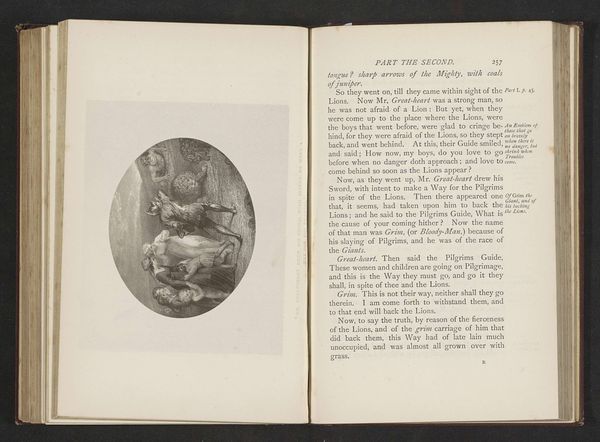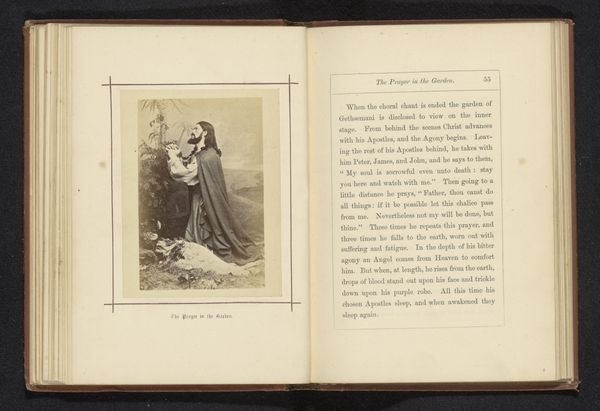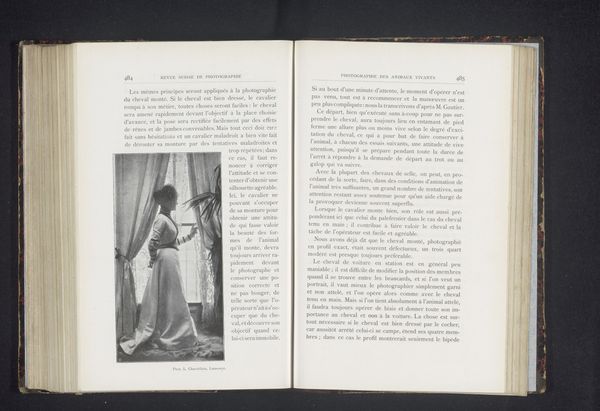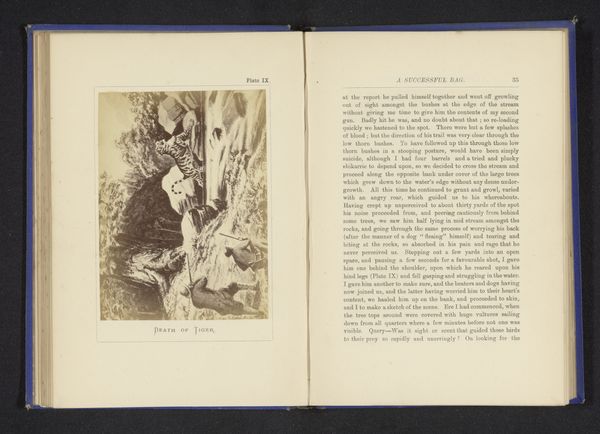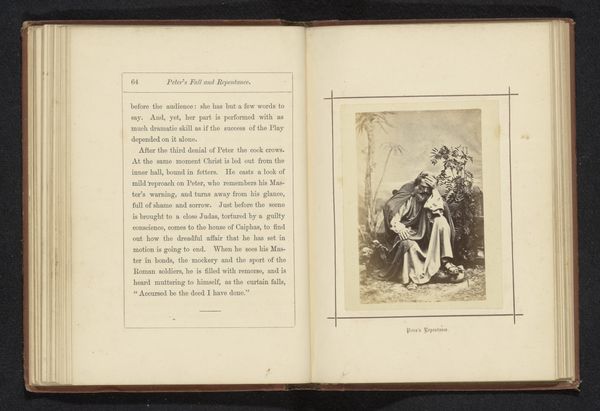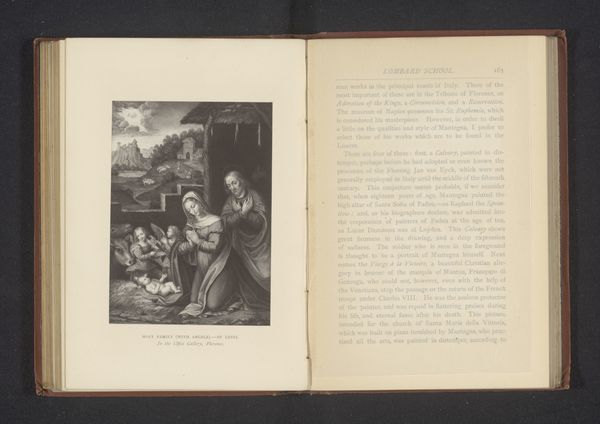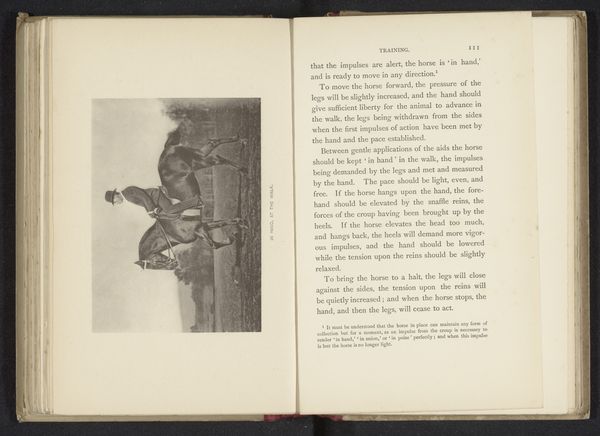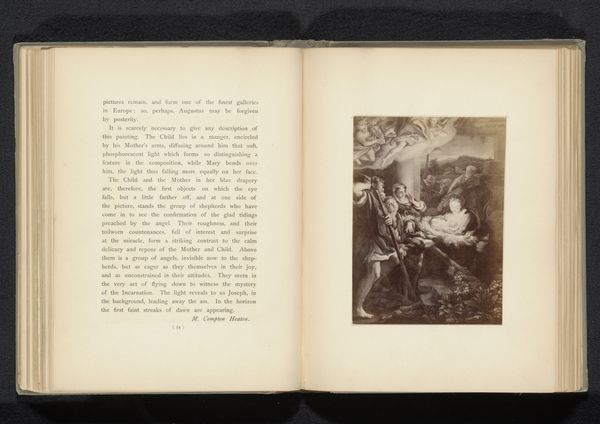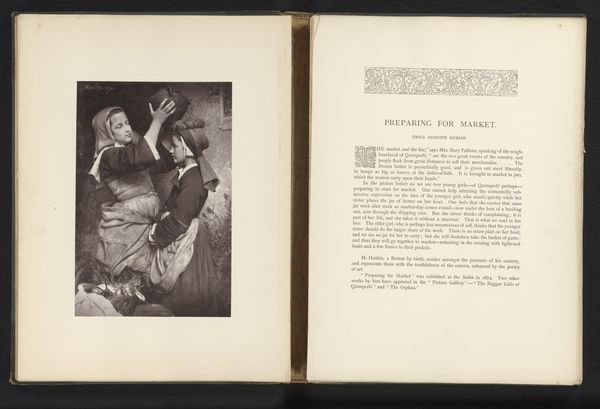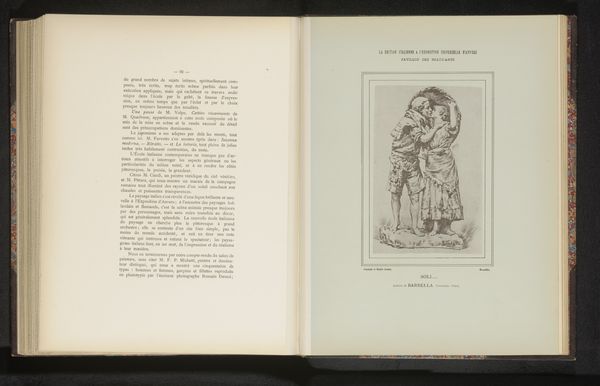
Fotoreproductie van een prent door Thomas Stothard, voorstellend een illustratie voor The Vicar of Wakefield door Oliver Goldsmith before 1880
0:00
0:00
Dimensions: height 110 mm, width 82 mm
Copyright: Rijks Museum: Open Domain
Editor: This is a photo reproduction of an illustration for Oliver Goldsmith’s *The Vicar of Wakefield* by Thomas Stothard, dating from before 1880. It’s an etching, lithograph and engraving on paper, and what immediately strikes me is the melodramatic scene. Everyone is so theatrical. How do you interpret this work in its historical context? Curator: Given that this is a reproduction, its reception becomes a really interesting point of entry. Consider the rise of illustrated books in the 19th century. They democratized art and literature, making them accessible to a wider audience. This image, reproduced and distributed, plays a part in shaping how the public understood Goldsmith's novel, doesn't it? What kind of visual shorthand is at work here, and how did it influence societal values through narrative? Editor: So, this image isn’t just about the novel itself, but about the wider culture surrounding it, how stories and values were circulated? The melodrama, for instance, emphasizes specific emotional responses that become normalized. Curator: Exactly! Think about the composition, the clear delineation between the figures. It invites viewers to take sides, to align themselves with certain characters and their moral positions. Who benefits from such clear narratives? How do they reinforce social hierarchies or expectations of behavior? And, how does Romanticism play a role in creating and influencing such strong imagery? Editor: I see how the image functions as a kind of propaganda, reinforcing certain ideals within the expanding readership of the 19th century. It makes me think about the power of images to not just reflect but shape society's beliefs. Curator: Precisely. The printing press and other innovations are really instrumental for that widespread influence and effect on society. This work invites us to examine how these kinds of narratives, visually presented, contributed to shaping Victorian moral and social landscapes. It’s quite thought-provoking.
Comments
No comments
Be the first to comment and join the conversation on the ultimate creative platform.
